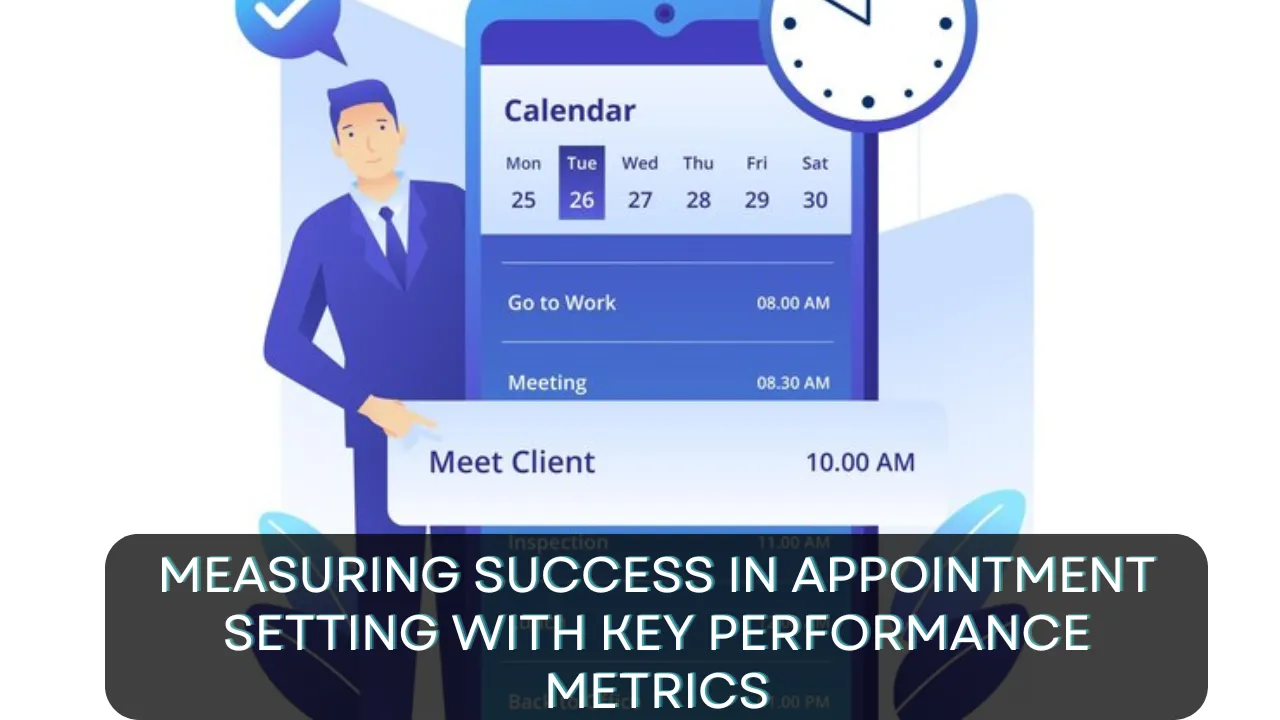In the midst of a daily whirlwind, it can be easy to lose sight of your goals. KPIs help keep you focused and on track. Whether you’re a Sales Manager running the show, an SDR in the trenches, or a Marketing Manager driving lead gen, appointment setting success requires personalization, multichannel outreach, value-driven interactions and continuous optimization.
Conversion Rates
Whether you’re a Sales Manager, a diligent SDR, a Business Owner, or a savvy Marketing Manager, effective appointment setting is a critical aspect of achieving your sales goals. Using the right KPIs, you can evaluate your team’s performance and identify areas for improvement.
One of the most important metrics to track is conversion rates. This KPI measures the percentage of potential leads that convert to scheduled appointments, revealing how effectively your team is performing. Another critical indicator is the appointment-to-demo rate, which reveals how many of your scheduled appointments result in a product demonstration or presentation.
The next metric to monitor is response time, which reveals how quickly your team responds to incoming business inquiries. It’s crucial to ensure your representatives are able to respond to prospects in a timely manner so you can build trust and maintain positive relationships with new customers. Also, be sure to review your appointment-setting processes regularly so they can adapt to changing market trends and consumer behaviors. This will enable your company to be proactive and stay ahead of the competition.
Appointments Set
Appointment-to-Demo Conversion Rate is a critical KPI for companies that utilize appointments to schedule product demos or presentations. This metric helps evaluate how effective your team is in advancing prospects through the sales process. A high conversion rate means your team is successfully turning qualified leads into sales opportunities.
A low conversion rate could mean your team needs to change their approach or messaging. It could also be a sign that your team isn’t following up on scheduled appointments or that they are not providing value to potential clients.
Measuring your success in appointment setting requires a consistent, systematic approach to data analysis. It’s important to set SMART goals and have regular conversations with your team to ensure they are focusing on the right metrics. Make sure your KPIs are relevant to your company’s goals and that they are realistic for your sales team. Encourage your team to stay current with industry trends and cultivate a culture of learning. This way, your company can keep up with market changes and remain competitive in a rapidly evolving business environment.
Retention Rates
KPIs and metrics provide a critical window into the performance of your appointment setting team, eliminating guesswork and allowing you to make decisions based on hard data. They are also a great tool for fostering accountability and motivating your team to achieve results that will drive your business forward.
KPIs should be specific and relevant to your business goals, ensuring that they align with the work your team does on a day-to-day basis. It’s important to review your KPIs regularly and adjust them as necessary.
For example, if you find that your appointments tend to run long, this may indicate that there are snags in the workflow that need to be addressed, such as improving your sales scripts or adding training for new SDRs.
Whether you’re a seasoned Sales Manager overseeing a team of SDRs, a Marketing Manager running lead gen, or a Business Owner closing deals, these universal appointment-setting metrics can help you track progress and stay on track toward your sales goals. Establishing a set of clear and relevant KPIs for your business can help you evaluate your telemarketing efforts and make better strategic decisions.
Referral Rates
The best way to evaluate the effectiveness of your appointment setting process is by looking at how often your clients and prospects refer new business to you. A high referral rate is a good indicator of client satisfaction and can help speed up the sales cycle.
To improve your referral rates, set a goal for how many quality appointments your team can make per day. Then, develop a plan to meet or exceed this goal. Ensure your team has access to the tools they need, including training on product knowledge and effective objection handling. Additionally, use a customer survey system to measure satisfaction and collect data.
By tracking and analyzing appointment setting KPIs, your team can gain insights that drive continuous improvement. For example, if your team’s Conversion Rate is lower than expected, it may be time to consider changing your lead qualification processes or tweaking your telemarketing scripts. By sharing these insights with team members, you can foster a culture of accountability and collaboration.
Revenue Generated
The Revenue Generated KPI provides a granular look at the financial value of each appointment. This metric can help you gauge the effectiveness of your outreach and identify areas for improvement. It also allows you to measure the impact of your appointment setting efforts on the overall sales cycle and assess the adjustment between marketing and sales.
When creating KPIs, keep them relevant and aligned with your business objectives. Make sure they are measurable and attainable so that your employees can work towards them. KPIs should also be specific to each job activity and have a precise use, so that there is less room for misinterpretation.
Effective appointment setting strategies are vital for building long-lasting customer relationships and increasing business growth. By monitoring calls and providing feedback, you can ensure that your team is delivering the best possible service to your clients. Whistle can help you determine the right KPIs to track and develop a data-driven strategy to improve your performance. Contact us to get started today. You can expect a quick turnaround on your project and expert advice from our team of friendly and knowledgeable staff.
Conclusion
- Stay Focused with KPIs: KPIs serve as guiding lights in the fast-paced world of appointment setting, helping individuals and teams stay focused on their goals amidst daily challenges.
- Evaluate Performance: Metrics like conversion rates, response times, and retention rates provide invaluable insights into your team’s performance, allowing for continuous improvement and optimization.
- Drive Accountability: KPIs foster accountability within your team, motivating members to achieve results that drive the business forward and ensuring everyone is aligned with company objectives.
- Continuous Improvement: Regularly reviewing and adjusting KPIs enables you to adapt to changing market trends and consumer behaviors, staying proactive and ahead of the competition.
- Enhance Customer Relationships: By monitoring referral rates and revenue generated, you can gauge customer satisfaction, strengthen relationships, and ultimately drive business growth.




